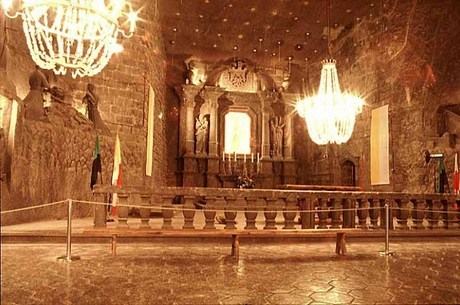The Wieliczka Salt Mine
One traveled Frenchman observed in the 18th century that Krakow's Wieliczka salt mine was no less magnificent than the Egyptian pyramids. Millions of visitors, the crowned heads and such celebrities as Goethe and Sarah Bemhardt among them, have appeared to share his enthusiasm when exploring the subterranean world of labyrinthine passages, giant caverns, underground lakes and chapels with sculptures in the crystalline salt and rich ornamentation carved in the salt rock. They have also marveled at the ingenuity of the ancient mining equipment in the Wieliczka salt mine. And the unique acoustics of the place have made hearing music here an exceptional experience.
The Wieliczka Salt Mine, nowadays practically on the southeast outskirts of Krakow, has been worked for 900 years. It used to be one of the world's biggest and most profitable industrial establishments when common salt was commercially a medieval equivalent of today's oil. Always a magnet, since the mid-18th century Krakow's Wieliczka salt mine has become increasingly a tourist attraction in the first place. Today visitors walk underground for about 2,000 m in the oldest part of the salt mine and see its subterranean museum, which takes three hours or so.
Nine centuries of mining in Wieliczka produced a total of some 200 kilometers of passages as well as 2,040 caverns of varied size. The tourist route starts 64 m deep, includes twenty chambers, and ends 135 m below the earth surface, where the world's biggest museum of mining is located with the unique centuries-old equipment among its exhibits. Occasionally concerts and other events take place in the Wieliczka mine’s biggest chambers.
There is a sanatorium for those suffering from asthma and allergy situated 135 meters deep underground in the Wieliczka Salt Mine. UNESCO has entered the Wieliczka Salt Mine in its World Heritage Register.




